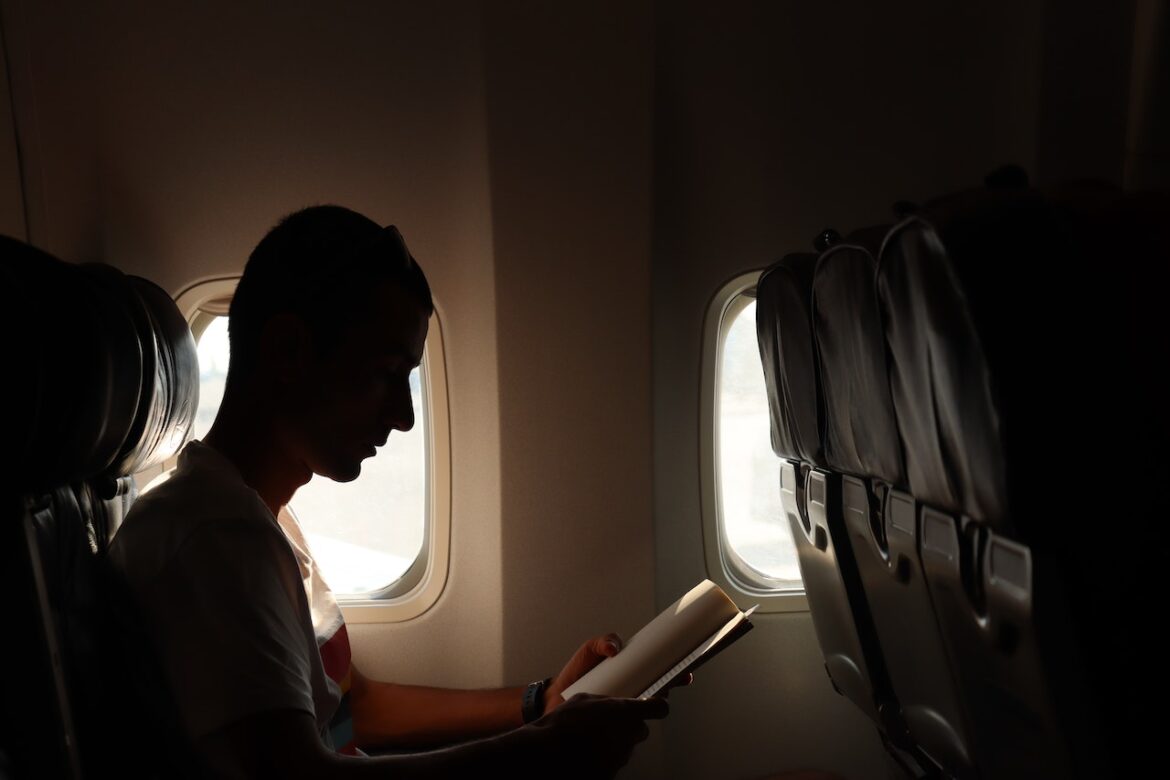Paul Takes the Form of a Mortal Girl
 Andrea Lawlor’s wildly inventive novel Paul Takes the Form of a Mortal Girl (Vintage. $16.95. www.andrealawlor.com) is a Niagara Falls of gender fluidity. Paul Polydoris, the protagonist in this frothy rush of queer theory and magic realism, is a shapeshifter, able to transmogrify his body parts and carnal appetites as the spirit moves him (Lawlor opts to use male pronouns for the character). He can shrink his penis and grow C-cup breasts with a concentrated stare, or massage away his adam’s apple on a moment’s notice: “It was like that TV show, Manimal, only that guy couldn’t control himself”). Paul speeds from tryst to tryst and city to city in a restless early-1990s identity quest, submerging himself in a panoply of queer communities, from the Michigan Womyn’s Music Festival to ACT UP in New York to the back room of the San Francisco Eagle. Lawlor’s greatest accomplishment is rendering Paul with a consistent psyche: whether his genitals are male or female, whether he’s having straight or gay or lesbian sex, there’s never a Jekyll and Hyde aspect to his character. We don’t perceive Paul as switching from one persona to another; we feel him flowing among aspects of a single self. While vivid sex scenes and jaunty prose keep the pages turning, Lawlor’s plotting is loose and picaresque. Like the varieties of sexual and gender expression it explores—and like the books of William S. Burroughs, which it evokes—”Paul” is perhaps best dipped in and out of, rather than rushed through in hope of resolution. Originally published by small independent Rebel Press in 2017, the very fact that this book has been acquired and reissued for the mass market by a division of Penguin/Random House suggests that cultural attitudes about nonbinary sexuality may be as capable of transformation as Paul is.
Andrea Lawlor’s wildly inventive novel Paul Takes the Form of a Mortal Girl (Vintage. $16.95. www.andrealawlor.com) is a Niagara Falls of gender fluidity. Paul Polydoris, the protagonist in this frothy rush of queer theory and magic realism, is a shapeshifter, able to transmogrify his body parts and carnal appetites as the spirit moves him (Lawlor opts to use male pronouns for the character). He can shrink his penis and grow C-cup breasts with a concentrated stare, or massage away his adam’s apple on a moment’s notice: “It was like that TV show, Manimal, only that guy couldn’t control himself”). Paul speeds from tryst to tryst and city to city in a restless early-1990s identity quest, submerging himself in a panoply of queer communities, from the Michigan Womyn’s Music Festival to ACT UP in New York to the back room of the San Francisco Eagle. Lawlor’s greatest accomplishment is rendering Paul with a consistent psyche: whether his genitals are male or female, whether he’s having straight or gay or lesbian sex, there’s never a Jekyll and Hyde aspect to his character. We don’t perceive Paul as switching from one persona to another; we feel him flowing among aspects of a single self. While vivid sex scenes and jaunty prose keep the pages turning, Lawlor’s plotting is loose and picaresque. Like the varieties of sexual and gender expression it explores—and like the books of William S. Burroughs, which it evokes—”Paul” is perhaps best dipped in and out of, rather than rushed through in hope of resolution. Originally published by small independent Rebel Press in 2017, the very fact that this book has been acquired and reissued for the mass market by a division of Penguin/Random House suggests that cultural attitudes about nonbinary sexuality may be as capable of transformation as Paul is.
 In Search of Stonewall
In Search of Stonewall
This June’s WorldPride celebration in Manhattan coincides with the 50th anniversary of the Stonewall riots, widely considered to mark the start of the modern American gay rights movement. In Search of Stonewall (G&LR Books, edited by Richard Scheider, Jr. $19.95. www.glreview.org) a selection of essays from the estimable but underappreciated Gay & Lesbian Review (itself celebrating a 25th anniversary this year) provides a prismatic view of the uprising, its forbears, its repercussions, and its symbolism. In his essay, Michael Denneny points out that “the shot heard ’round the world” may not have been the riots themselves, but the world’s first Gay Pride March, organized to commemorate their first anniversary. During the intervening year, he writes, those five days of localized upheaval “had become an idea, the idea that gay people would fight back, would stand up for their rights.” Among the volume’s luminary contributors are Felice Picano, Larry Kramer, John Rechy, Lillian Faderman, and Jewelle Gomez.
Dungeons and Drag Queens
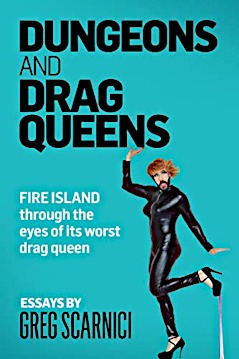
Given its legendary status as a gay getaway, it’s surprising how few books have been published about Fire Island. So, even before you start snorting vodka tonics out your nostrils from laughter, special welcome is due to Dungeons and Drag Queens (Amazon. $9.99. www.gregscarnici.com) by Greg Scarnici (aka Levonia Jenkins), an associate producer at Saturday Night Live. This scrappy, scrapbooky self-published volume exudes earnest affection for bohemian Cherry Grove and begrudging affection for the bougier Pines: “In the Pines, they pump Truvada into the tap water and the entire beach is air-conditioned.” While full of no-holds (or holes) barred anecdotes about the author’s own wild times on the island—where he’s spent portions of the last 28 summers—the book also incorporates occasional historical nuggets about the island’s development as a safe space for gays dating back to the 1930s.
 Ze French Do It Better
Ze French Do It Better
While hardcore Francophiles will delight in its humorous cultural anthropology, Ze French Do It Better (Flammarion. $29.95. www.rizzoliusa.com) can also be highly recommended as an itinerary planner and people-watching primer for your next trip to Paris. “Next trip”, because this book skips all of a first timer’s must-see museums and monuments to dig into more specialized sites, tailored to specific Parisian personalities. The authors have created a cheeky taxonomy eight style-driven types: Classic Frenchy, Aristo Chic, Vintage Bourgeois, Modern Bourgeois, Intellectual, Eco-warrior, Bohemian, and Foodie. Quizzes at the start of each chapter will help you finding the tribes you belong to. Then, there’s custom-tailored advice on where like-minded souls choose to stroll, shop, and dine around town.
AIRPLANE READ OF THE MONTH
 Sex and violence snuggle up between the covers of Todd Sweeney: The Fiend of Fleet High, a discomfitingly delicious new novel by David Pratt (Hosta Press. $12.50. www.hostapress.com) that reads like a lost John Waters movie. This grand guignol comedy serves up ample helpings of cannibalism, onanism, blood-soaked sex, and conversion therapy. It’s an over-the-top spin on “Sweeney Todd,” cast with contemporary small town high school students. Think “Riverdale” with raunch (and pan-drippings). Strapping young Todd has just been released from reform school and returned for senior year when he learns his widowed mother has been preyed upon in his absence. The culprit? Lascivious Ashford Squeers, the very same wicked guidance counselor (and “Nicholas Nickelby” reference) who framed Todd and arranged his incarceration. And now, Squeers is planning to have Toby, Todd’s little queer sidekick, shipped off to Saint Bonaventure’s Home for Effeminate Boys. Its enough to make Todd want to kill the bastard, then join forces with his best gal-pal Nellie(!) to chop up the corpse and bake it into savory empanadas. The kids’ #meattoo movement gets quickly out of hand, leading to distinctly unsavory scenes like the one in which the racist mother of one nasty classmate unwittingly nibbles “a warm golden packet of her son’s flesh.” Pratt lards his intentionally overbaked prose with campy pop cultural morsels: a film shown to shock the homosexuality out of teen queens juxtaposes images of Julie Andrews, Kristin Chenoweth and Idina Menzel with the slaughter of pigs and wartime atrocities. Amidst all the comedic mayhem, there’s also a surprisingly effective eroticism at play; the softporn allure of Todd’s masturbation fantasies, accounts of cellmate sex and naked baking sessions is hard to deny. There’s not much literary nutrition to be found here, but as a guilty pleasure, “The Fiend of Fleet High” is as tasty as a Twinkie.
Sex and violence snuggle up between the covers of Todd Sweeney: The Fiend of Fleet High, a discomfitingly delicious new novel by David Pratt (Hosta Press. $12.50. www.hostapress.com) that reads like a lost John Waters movie. This grand guignol comedy serves up ample helpings of cannibalism, onanism, blood-soaked sex, and conversion therapy. It’s an over-the-top spin on “Sweeney Todd,” cast with contemporary small town high school students. Think “Riverdale” with raunch (and pan-drippings). Strapping young Todd has just been released from reform school and returned for senior year when he learns his widowed mother has been preyed upon in his absence. The culprit? Lascivious Ashford Squeers, the very same wicked guidance counselor (and “Nicholas Nickelby” reference) who framed Todd and arranged his incarceration. And now, Squeers is planning to have Toby, Todd’s little queer sidekick, shipped off to Saint Bonaventure’s Home for Effeminate Boys. Its enough to make Todd want to kill the bastard, then join forces with his best gal-pal Nellie(!) to chop up the corpse and bake it into savory empanadas. The kids’ #meattoo movement gets quickly out of hand, leading to distinctly unsavory scenes like the one in which the racist mother of one nasty classmate unwittingly nibbles “a warm golden packet of her son’s flesh.” Pratt lards his intentionally overbaked prose with campy pop cultural morsels: a film shown to shock the homosexuality out of teen queens juxtaposes images of Julie Andrews, Kristin Chenoweth and Idina Menzel with the slaughter of pigs and wartime atrocities. Amidst all the comedic mayhem, there’s also a surprisingly effective eroticism at play; the softporn allure of Todd’s masturbation fantasies, accounts of cellmate sex and naked baking sessions is hard to deny. There’s not much literary nutrition to be found here, but as a guilty pleasure, “The Fiend of Fleet High” is as tasty as a Twinkie.


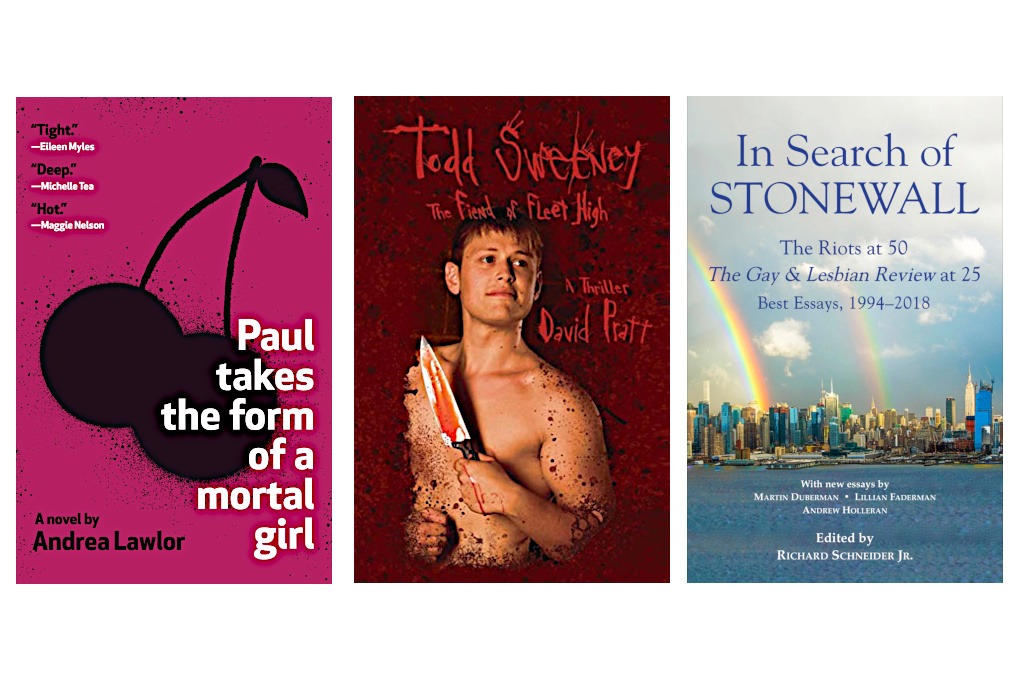
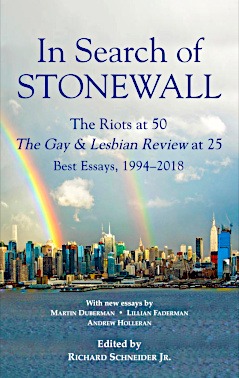 In Search of Stonewall
In Search of Stonewall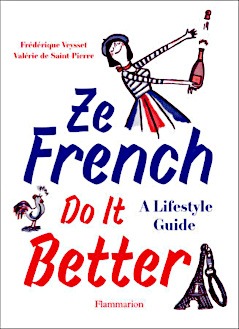 Ze French Do It Better
Ze French Do It Better